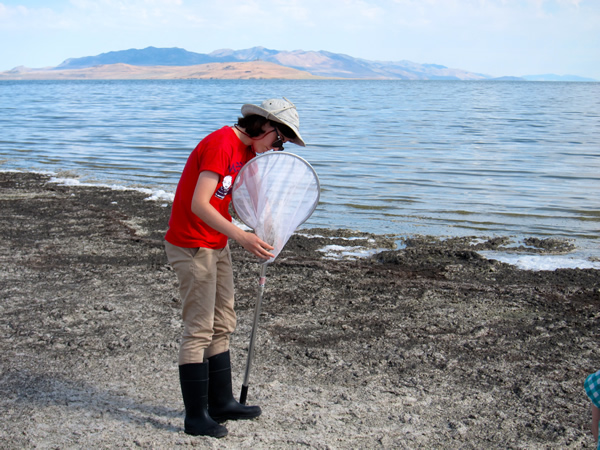Research News
June 28, 2018
Going with the Flow: iUTAH GAMUT Transitions

The Utah Center for Water Resources Research (UCWRR) at Utah State University recently featured a story on what is happening to the GAMUT (Gradients Along Mountain to Urban Transitions) network in the Logan River. Water bLog, a semi-annual newsletter produced by UCWRR, is part of the Utah Water Research Laboratory at USU. In his introduction, Director Mac McKee says that GAMUT, now the Logan River Observatory, is “a valuable resource that is supporting local policy and water management decisions that address local water related challenges.”
Writer Carri Richards goes on to characterize the transition this way, “Now as the iUTAH project comes to a close, the Logan GAMUT network is transitioning to become the Logan River Observatory due to continued support from the USU Office of Research and Graduate Studies, the College of Engineering, the College of Natural Resources, the Ecology Center, and the Utah Water Research Laboratory. Drs. Bethany Neilson, Jeffery Horsburgh, and Michelle Baker are working to maintain and expand the partnerships forged over the past five years to ensure that the wealth of data continues to benefit the stakeholders who rely on it.”
“Thanks to iUTAH, the GAMUT infrastructure is already in place and we have some key baseline data,” says Neilson. “Now with the Logan River Observatory, we will be able to continue long-term data collection throughout the Logan River basin and expand the infrastructure in Cache Valley to address local water management questions. The Observatory will provide a foundation to develop new partnerships with various stakeholders and an opportunity to engage with the community to protect this valuable local resource.”
So, what’s next for GAMUT? “The Logan River Observatory team will work with various stakeholders, including Cache Water District, Logan City, the Nature Conservancy, the Utah Division of Water Quality, and the Logan River Task Force, to build and support existing infrastructure. For example:
- An upcoming project is the monitoring network to include stormwater monitoring in local canals.
- The team will further encourage the use of these data sets in K-12 and community education via educational outreach activities.
- They will work to establish the Observatory as a teaching watershed to train university students in water-related fields
After the iUTAH project ends this summer, the Logan River Observatory will continue to provide data to inform local policy and water management decisions to address water related problems (stormwater, Total Maximum Daily Load studies, etc.). Over the coming years, the Logan River Observatory team will continue to develop partnerships with individuals and groups, both in the valley and across the state, who are interested in monitoring, understanding, and managing local water systems.”
Read the complete June 2018 issue of The Water bLog Newsletter.
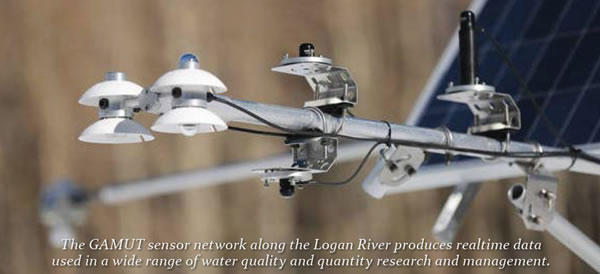
June 27, 2018
GRAs Continue Strong Ties to Water Research
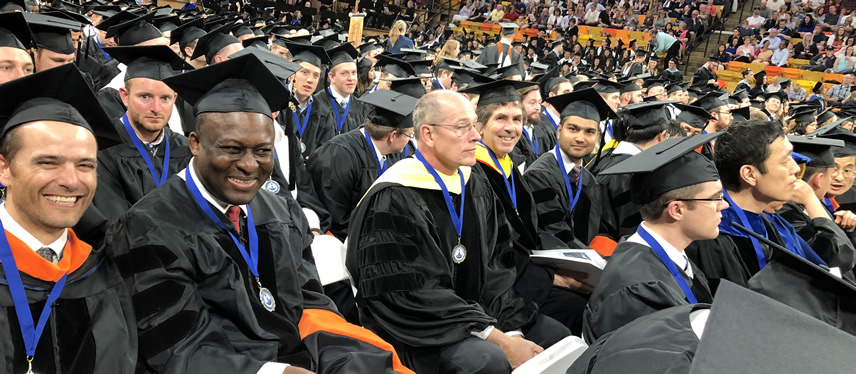
Over the past six years, the iUTAH community has benefitted greatly from the graduate students that worked on the project. As part of their graduate training, these students engaged with faculty research mentors to grow their knowledge in ecohydrology, environmental engineering, socio-environmental science, and coupled modeling. While nearly 50 students have served this role across three research focus areas and the cyberinfrastructure team, we would like to take a moment to highlight the training successes of a few successful doctoral students who graduated this year.

Caleb Buahin graduated with a Ph.D. in Civil and Environmental Engineering from Utah State University. His current work as a post-doc at USU builds on his previous work using the HydroCouple software framework for more holistic assessment of water systems by allowing model developers to stitch disparate models together. He says that “beyond providing the fellowship to support my doctoral degree, iUTAH provided an arena where I was able collaborate and build professional relationships with researchers from diverse backgrounds.”
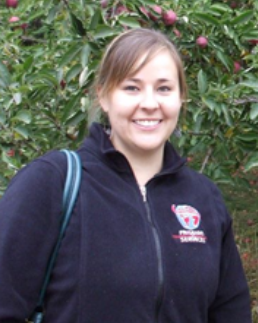
Taya Carothers graduated with a Ph.D. in Environment and Society in the Quinney College of Natural Resources at USU. She will be moving to the Chicago area where she will be the Assistant Director of the International Office at Northwestern University starting in August. She still plans to be involved in local water-related issues by volunteer with Chicago River efforts or environmental justice organizations.
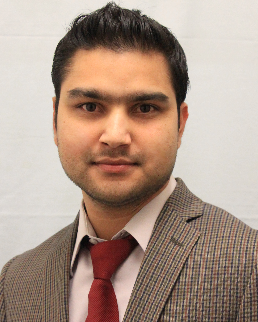
Kshitij “Kay” Parajuli graduated with a Ph.D. in Civil and Environmental Engineering. While at USU, Kay’s research focused on soil hydrology and evapotranspiration. He will be working with Scott Jones as a post-doc in the environmental soil physics lab, where he will use the findings of his work to improve water management at regional scale.

Yusuf Jameel graduated from the University of Utah, winning the outstanding Ph.D. award from the department of Geology and Geophysics in recognition of his dissertation on Stable Isotope Mixing Models in Urban and Natural Environments. He is moving to Gainesville FL where he will start a post-doc position in August. While there, he will continue his work in hydrogeology, working on application of Bayesian methods in ecology and hydrology.
“Being part of iUTAH had been the best experience as a graduate student,” said Kshitij “Kay” Parajuli. “The involvement has opened greater prospects to connect with the interdisciplinary group of people including faculty researchers and stakeholders from across the state. It has been an incredible journey of being a student and a mentor with several opportunities to take part in communications and leadership trainings.”
These students, in addition to completing their own research, served as mentors to undergraduate students engaged in the iUTAH iFellows and Trainee programs. Congratulations to these and the other students who have graduated in the past few years and are now poised to help shape Utah's and the nation's water future.
June 26, 2018
iUTAH Researchers Use GAMUT Data to Improve QC
A new study focused on Quality Control (QC) methodology in the iUTAH project using GAMUT data. Researchers Amber Jones, Jeff Horsburgh, and Dave Eiriksson published an article titled “Assessing subjectivity in environmental sensor data post processing via a controlled experiment” in the July 2018 edition of Ecological Informatics. The article used high frequency environmental data collected by sensors in GAMUT or 'Gradients Along Mountain to Urban Transitions,’ iUTAH’s ecohydrologic observatory, to examine QC procedures to observe and review post-processing results.
In this paper, researchers were able to compare QC post processing of sensor data by multiple participants, including whether experienced participants' results were more variable than novices. They then looked at participants' data shifts at calibration events that caused the greatest discrepancies. Finally, the paper made recommendations include prescriptive procedures and collaborative quality control.
Results suggest that to “improve consistency, clarifying QC guidelines and protocols and thoroughly training technicians is recommended. Implementing a collaborative QC process is also suggested wherein the changes introduced by QC for sensitive periods are reviewed for cases where highly accurate data are required. Because of the resources demanded by review and collaboration, in determining QC workflows, scientists should look to balance the level of review with the potential improvements in processed data quality and precision.”
The article can be viewed under the title “Assessing subjectivity in environmental sensor data post processing via a controlled experiment.”
Jones, A.S., J.S. Horsburgh, and D. Eiriksson. 2018. Assessing subjectivity in environmental sensor data post processing via a controlled experiment. Ecological Informatics, 36: 86-86. 10.1016/j.ecoinf.2018.05.001.

April 10, 2018
Aerial Imagery Gives Insight into Water Trends
iUTAH researcher Bethany Neilson and Tyler King, at Utah State University, have developed a new method to estimate river discharge using aerial imagery gathered from helicopters and drones.
A media release by USU’s Grace Michaelson says that new technology could make measurements of water flow of rivers more feasible, accurate, and less expensive in the field. The article states, “(t)hese alternative methods for monitoring water resources are necessary to continue meeting global water demands while simultaneously easing the impacts of floods and droughts.”
The article goes on to add that, “(t)here are a limited and dwindling number of locations where river discharge is measured directly at gauging stations. Establishing and maintaining these stations is expensive and time consuming. As a result, preference is often given to large rivers of significant economic and social importance. Additionally, other remote sensing methods have been developed, but rely on relatively coarse data collected by satellites and, as such, also focus on the larger rivers of the world. As a result, scientists lack a complete view of what is happening in smaller river basins, leaving limited understanding of the processes controlling river water quantity and quality.
King and Neilson’s approach aims to fill this data gap by using high resolution aerial imagery to estimate flows at many locations along smaller rivers and streams. This complements both traditional gauging station networks that are tied to a limited number of specific locations along river networks and satellite based remote sensing methods that are used to estimate flows in larger rivers.”
After the development of a basic approach to imaging “information is then used within a hydraulic model to approximate the relationship between river discharge and river width. Once these models are built, any following observations of river width — including satellite imagery, aerial imagery or ground observations — can be used to estimate river discharge. ‘Remote sensing methods like these can significantly improve our ability to understand hydrologic responses to a changing climate in small, ungauged watersheds around the world,’ said Neilson, an associate professor at USU.”
Nellson and Tyler King, a PhD candidate at USU, published the results of their study Feb. 7, 2018 in Water Resources Research.
Press: Science Daily | Utah State Today | NSF News From the Field | ENN Environmental News Network

April 2, 2018
Building Cross-Campus STEM Collaboration in Utah
The iUTAH EPSCoR project has built Science, Technology, Engineering, and Math (STEM) capacity in Utah through its Research Catalyst Grant (RCG) program. These competitively funded grants targeted faculty at primarily undergraduate institutions (PUls) involved in water-related research. They also strongly encouraged undergraduate student participation in research, presentations, and publications. What started as seed funding for research evolved to take a more holistic approach including professional development, release time from teaching, and funding for additional equipment and resources. An outreach component of this program also supported 23 outreach events to diverse audiences.
As a result, 20 researchers, 11 of them women, were awarded RCG funding totaling $300,000 over the past five years. The research involved four different PUIs: Southern Utah University, Utah Valley University, Weber State University, and Westminster College.
The research of RCG awardees has captured the attention of larger universities in Utah, as demonstrated in these stories below:
"The RCG grants and participation in iUTAH gave the PUI faculty opportunities to flex their professional muscles through research; it also provided a break from heavy teaching loads,” said one participant in a post-award focus group. Another applicant not receiving an RCG grant said that “the whole RCG process had been instrumental in providing a relatively streamlined, low friction opportunity, which incentivized him to put together a proposal, and providing feedback that strengthened the proposal to the point where it could be competitive in another setting.” The applicant later received funding from a federal agency.
Awardees have taken full advantage of professional development training, opportunities, and funding offered by iUTAH to grow their skills and present their research. Three recipients participated in communications workshops by the Alan Alda Center for Communicating Science, 8 participated in an iUTAH sponsored Broader Impacts Forum, and one recipient was awarded a travel stipend to attend a Council on Undergraduate Research Institute on developing an undergraduate research program at a PUI. The program also supported travel for four students and their mentors to present RCG research at scientific conferences.
iUTAH’s RCG program has also encouraged continuity and synergy among research efforts carried out at PUIs, as evidenced by the publication of a co-authored paper by two non-concurrent RCG recipients. Suzanne Walther from UVU was among the first researchers to receive a RCG award in 2013. After she left the university for another post, Weihong Wang continued Walther’s initial research, and later expanded on the theme by submitting her own successful RCG proposal in 2015. Both researchers published their results, along with other iUTAH collaborators, in a paper titled “The historical records of stable isotopes and trace metals along Utah Lake-Jordan River transition zone, Utah (USA)” through the Utah Geological Association Publication, in 2017.
Interdisciplinary research and cross-campus collaborations has been a hallmark of the iUTAH RCG program. Research projects have involved 111 students to date, representing one third of the iUTAH undergraduate student cohort. Additionally, 14 of the researcher awards involved collaborations with at least one of three academic research universities in the state. Three also involved collaborations with other PUIs. To date, RCGs have generated 7 publications, 51 presentations, and 8 submitted grant proposals. Five of these grant proposals were awarded, for a total of $169K. Undergraduate students at PUIs throughout Utah were truly the beneficiaries of the RCG program by being involved with faculty mentors in real research and having opportunities not otherwise available to them.
